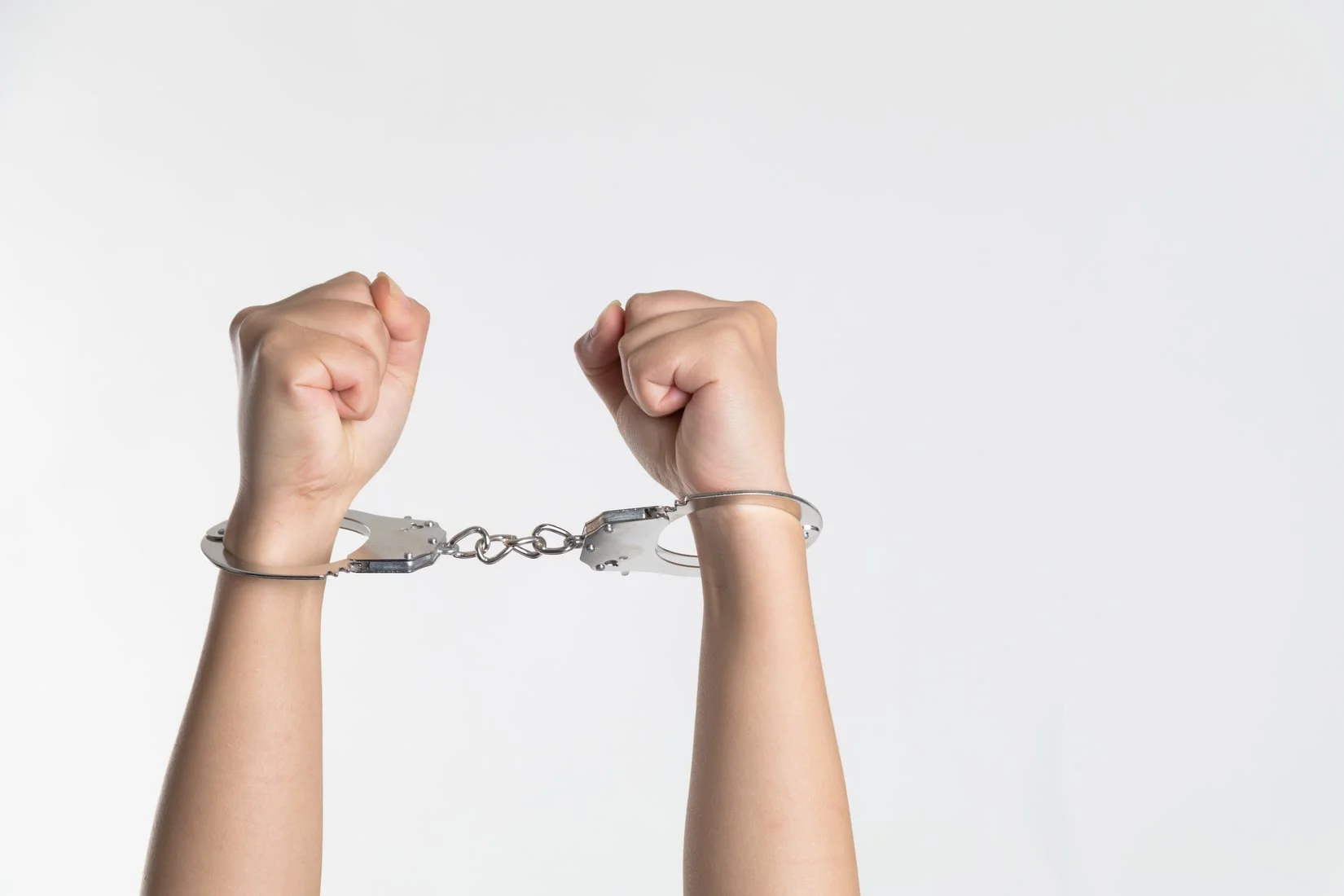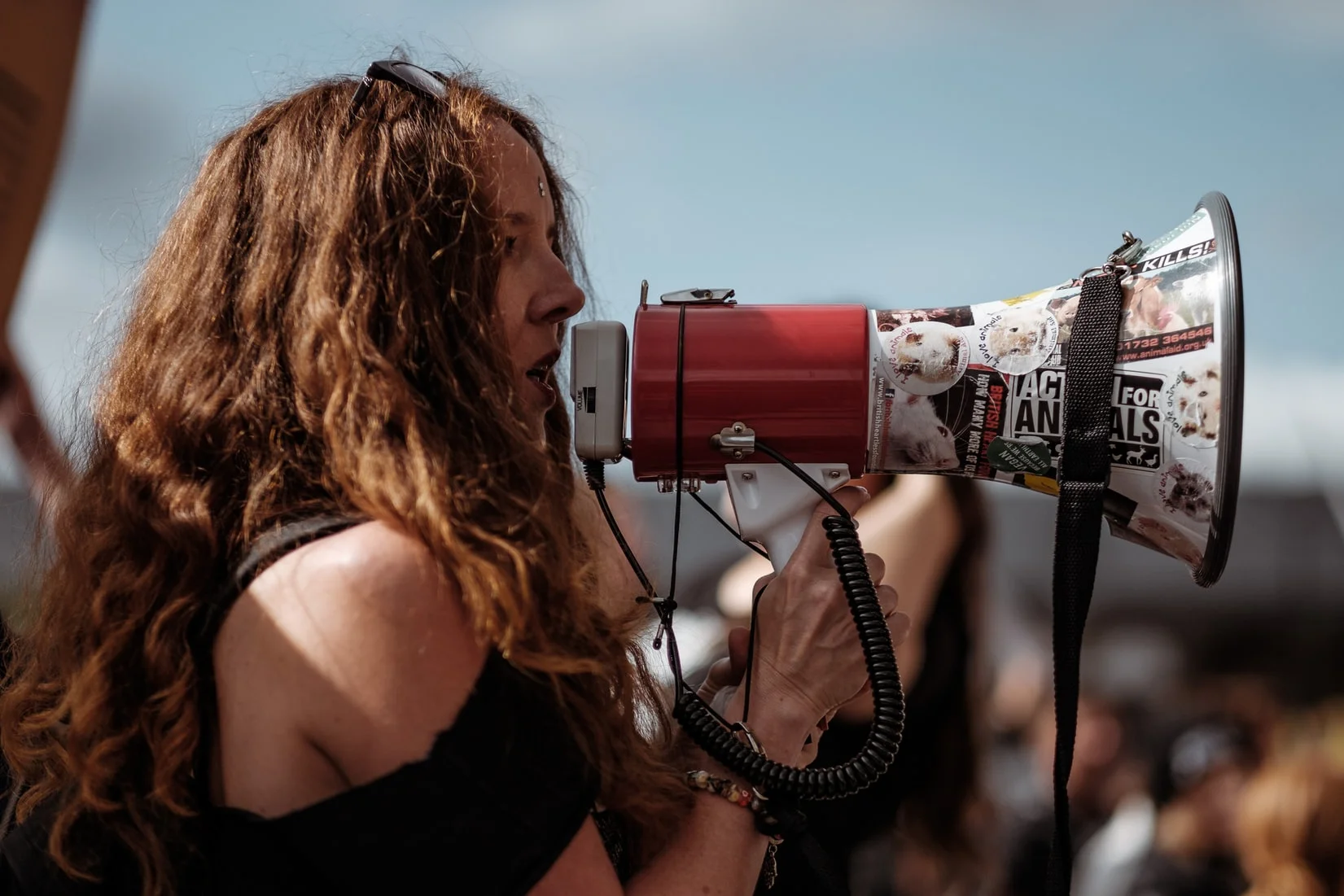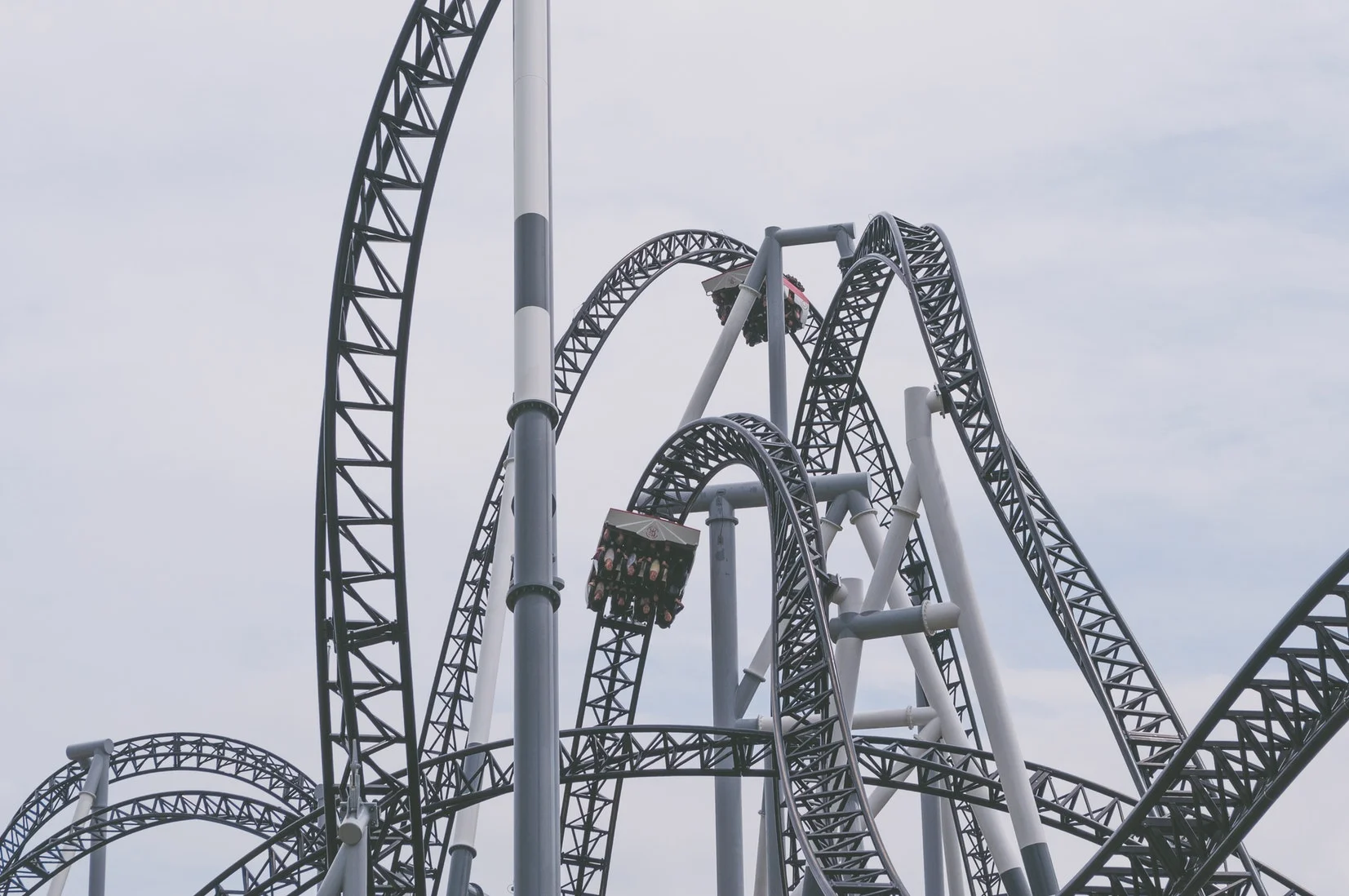Traumatic restraint saved my life...but does that make it ok?
Trigger warning: This article contains frequent talk of deliberate self harm, suicide and trauma.
In October 2016, I was a voluntary inpatient at my local acute psychiatric hospital. I had been admitted for a planned ‘respite’ stay of one week as symptoms of my Emotionally Unstable Personality Disorder (EUPD), also known as Borderline Personality Disorder (BPD), were severe and unmanageable.
I was self-harming several times a day, my suicidal ideation was strong and my emotions were all over the place, completely uncontrollable from one minute to the next. It was hoped that a period in hospital might help stabilise me but in reality the opposite happened.
I don’t hold my admission responsible for the decisions I made - I might well have acted in a similar way at home, alone, but on my second night on the ward, I made a serious attempt on my life. I was on 15 minute observations at the time but was found by a nursing assistant who instinctively checked on me ahead of time. I was successfully resuscitated by a team of the hospital staff before being rushed to A&E and being placed into a medically induced coma. My family were called to come and say their final goodbyes as I wasn’t expected to survive.
Miraculously though, I made a full recovery - at least physically.
However, when I was well enough to return to the psychiatric hospital, my intention was still to end my life and within a few days I was detained under the Mental Health Act (Sectioned) for my own safety. This meant I was now forcibly held in hospital and couldn’t leave. I remained sectioned in this way for six months as the hospital desperately tried to contain me and my dangerous behaviours.
Due to my frequent attempts to end my life in any way that I could, I was placed on 1:1 supervision, which lasted almost three weeks. This in itself was a traumatic experience - having someone with you 24/7 whose job is to actively observe you is a sure way to remove any sense of dignity you may have. Being watched in the bathroom and as I showered was more than embarrassing but at the time, all I could think about was my next ‘plan’ so my mind didn’t have room for shame. I really disliked it when it was agency nursing staff placed on my watch however - there was no rapport with them at all and having someone stare at you without ever speaking was horrible. Ok, it was my fault I was in that position in the first place but feeling alienated and like a problem in this way, plus often being watched by male members of agency staff, only increased my desire to end things.
Although I did try, any serious attempt to take my life was generally thwarted by having someone constantly within arms reach of me and after the three weeks, my 1:1 supervision was replaced by two minute and then five minute obs as I had apparently calmed down a little. This was when the traumatic restraint began.
So many times, nursing staff would check on me and find me mid- suicide attempt (things that I could use had been removed from me but I was extremely resourceful). They would obviously try and stop me but I was always extremely angered by this and would fight back. Inevitably, this would then result in them pushing their alarms and a ‘psychiatric emergency’ being declared hospital-wide and staff from all other wards rushing to my room to aid the member of staff with me.
I can’t put into words how angry I was during this phase of my life - even before I had been admitted to the hospital I was constantly wound up and downright scathing towards anyone who dared try and communicate with me. As a result, I wasn’t in the frame of mind to just submit when six members of staff launched on me, I wanted to be out of there and I was sure as hell going to do my best to make that happen.
That behaviour from me is what led to the restraints involving several members of staff immobilising my arms and legs for periods of time ranging from a couple of minutes (if I calmed down adequately) to, more often than not, up to half an hour whilst the nurses on duty prepared and administered intramuscular (IM) medication to me and everyone waited for me to become adequately sedated to no longer pose a problem.
Now, here’s the thing - that kind of restraint undoubtedly saved my life on many occasions during my admission. Either directly by interrupting an attempt or indirectly, by preventing me from leaving the ward when I had no leave (and fully intended to abscond in order to end my life somewhere where I could see it through).
However, that restraint was also traumatic. I can’t count the number of times I was restrained face down on my bed whilst people held onto my arms and legs, prevented me from moving and then exposed the required area for the IM injection. It was like torture.
What’s more, the restraint was often carried out in a public area on the ward so there was an audience too. Sometimes, if I was lucky, the area was cleared of patients but usually this didn’t happen and the experience was worsened as a result.
Does the fact that the process saved my life automatically negate or invalidate all this trauma? Should I be thankful that I still get nightmares about being restrained in this way because without it I wouldn’t even be alive to suffer the nightmares? I have wondered about this a lot in recent times.
Objectively, it would seem bizarre to argue that the practice of restraint should be abolished in acute psychiatric wards if it really is needed to prevent people from killing themselves - and it was for me. However, it also seems a little perverse to send people home from hospital with trauma issues stemming directly from their treatment there.
There is of course, also the impact that seeing others being aggressively restrained can have on patients that are not themselves subjected to the measure. This too, has affected me. In my first psychiatric admission many years ago on an eating disorders ward, a fellow patient was restrained facedown in the communal area for failure to comply with treatment and attempts to abscond. This was the first time I had ever seen the ‘technique’ being used and I was scared and appalled in equal measure, it just seemed barbaric. That is an image that will always stay with me and, at the time, I had never been restrained myself.
Furthermore, it should be mentioned that as well as creating new trauma, patients who have a history of physical or sexual abuse might also be re-traumatised by restraint procedures, particularly if these are carried out by members of staff of the same sex as the original abuser. This is important and yet could be easily minimised by implementing the routine questioning of new patients to wards about any historic abuse and specific triggers. Perhaps more needs to be done to make this happen.
Part of me wants to argue that restraint should not have been used in the eating disorders example above - there was no immediate risk to life so why should the patient have been subjected to that treatment? However, perhaps it all comes down to actions being taken ‘in the best interests’ of patients. If this patient had left the ward and not come back (she was detained under the Mental Health Act) then eventually she would have died from her eating disorder. Therefore, a risk to life was present, just a delayed one.
According to national charity Mind,
“...restraint should only be used as a last resort, when prevention and de-escalation have not worked. It should be done in a way that avoids pain and reduces fear and distress, with continuing efforts to de-escalate.”
(Mind, 2015, Restraint in Mental Health services; what the guidance says)
Further, the guidance on restraint states
“Physical restraint and other restrictive interventions must only be used as a last resort when there is a real possibility of harm if no action is taken.”
(Mind, 2015, as above)
I have no qualms with agreeing with these guidelines. The trouble comes however, with their interpretation on a day to day level on the wards.
Although my life was saved repeatedly through being physically and/or chemically restrained, both of these have led to significant trauma. The physical restraint often left me in pain and covered with bruises and both types actually heightened my fear and distress levels rather than reducing them. It is this that is not ok.
Rarely would staff try to de-escalate the situation once I had become an established patient on the ward - rather, it felt like my crisis plan just said “restrain and forcibly medicate”. However, perhaps this was purely due to the seriousness of the situations they were required to act on. There is mileage in the assertion that it takes several people to restrain you but only one to talk/listen to you when things are escalating but I’m not sure that having anyone talk to me at the point I was trying to kill myself would have prevented harm.
Perhaps that word is key; prevention. Once they began to know me better, and see me as a person outside of my EUPD / BPD , the ward staff implemented a care plan that allowed me to have 1:1 time with a member of the nursing team each shift. This was perhaps the most effective intervention in all of my treatment there - allowing me to talk through my feelings helped me understand where they were coming from, how I could try to manage them and also that they didn’t always have to be acted upon. We never talked about why I wanted to kill myself - no one ever asked - but by talking about my emotions, the desires to end my life gradually waned. Granted, I still had bad days and the need for restraint didn’t totally disappear but its frequency dropped significantly.
In conclusion, I believe that there is a place for restraint (physical and chemical) in acute hospital settings but that the way it is utilised and carried out needs to be carefully and continuously monitored by senior ward staff. It is not alright that such restraint is often traumatic for individuals involved (and those caught in the crossfire) and I would suggest some simple measures be put in place to avoid this.
Firstly, new patients to the ward should be asked about previous traumas routinely as part of the admissions process. If they have a history of abuse or even a past history of traumatic restraint, this should be noted and an appropriate care plan drawn up, which minimises the risk of triggering said trauma again.
Secondly, personalised prevention plans should be carried out with high risk patients. These shouldn’t just be ‘one size fits all’ strategies but, when possible, be drawn up alongside patients and respond to their own knowledge of what helps stop them from becoming suicidal/aggressive/whatever generally leads to the restraint. In my case, this was the 1:1 time with staff.
Thirdly, if restraint really is necessary, it should be done as Mind states; with the aim of avoiding pain and reducing fear and distress. All too often, it was a rough and painful process for me and my level of distress skyrocketed prior to being forcibly sedated. I understand that staff often have to respond to several ‘psychiatric emergencies’ requiring restraint each shift but it needs to be remembered that every patient is a person - a highly vulnerable and distressed person who is probably not acting according to their usual character - and deserves compassion. I would urge staff to imagine that they had been called to restrain one of their own colleagues and act accordingly towards every patient.
Fourthly, restraint should always be carried out without an audience. If necessary, communal areas should be cleared of other patients and unnecessary staff. This prevents humiliation of the patient involved and also the traumatic effect of seeing the restraint on other patients on the ward.
Finally, adequate debriefing and emotional and physical checks after the restraint should be given. I was almost certain to get a physical check-up after each time I had been restrained (comprising blood pressure, heart rate and o2 saturation levels) but the member of staff doing this very rarely spoke to me whilst doing so, let alone asked me how I was feeling emotionally or debriefed me in any way. It was almost as if I had been naughty and my punishment was to be ignored until I became rational or ‘good’ again. This made my self-esteem plummet and left me feeling confused and isolated in what was supposed to be a place of safety.
The issue of restraining adults in psychiatric settings is certainly complex. However, in my opinion it need not be traumatic and the fact that it saved my life doesn’t invalidate my experiences of finding it so.





